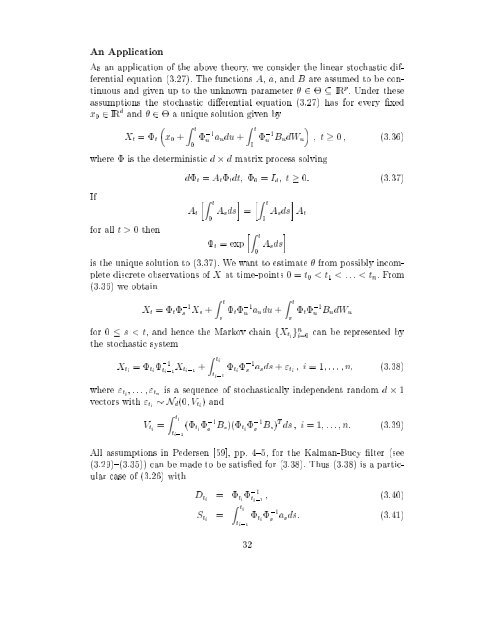Estimation in Financial Models - RiskLab
Estimation in Financial Models - RiskLab
Estimation in Financial Models - RiskLab
Create successful ePaper yourself
Turn your PDF publications into a flip-book with our unique Google optimized e-Paper software.
An Application<br />
As an application of the above theory, we consider the l<strong>in</strong>ear stochastic differential<br />
equation (3.27). The functions A, a, and B are assumed to be cont<strong>in</strong>uous<br />
and given up to the unknown parameter 2 IR p . Under these<br />
assumptions the stochastic dierential equation (3.27) has for every xed<br />
x 0 2 IR d and 2 a unique solution given by<br />
X t = t<br />
x 0 +<br />
Z t<br />
0<br />
,1<br />
u a u du +<br />
where is the determ<strong>in</strong>istic d d matrix process solv<strong>in</strong>g<br />
If<br />
for all t>0 then<br />
Z t<br />
0<br />
<br />
,1<br />
u B u dW u ; t 0 ; (3.36)<br />
d t = A t t dt; 0 = I d ; t 0: (3.37)<br />
A t<br />
Z t<br />
0<br />
Z t<br />
<br />
A s ds = A s ds A t<br />
0<br />
Z t<br />
<br />
t = exp<br />
0<br />
A s ds<br />
is the unique solution to (3.37). We want to estimate from possibly <strong>in</strong>complete<br />
discrete observations of X at time-po<strong>in</strong>ts 0 = t 0
















